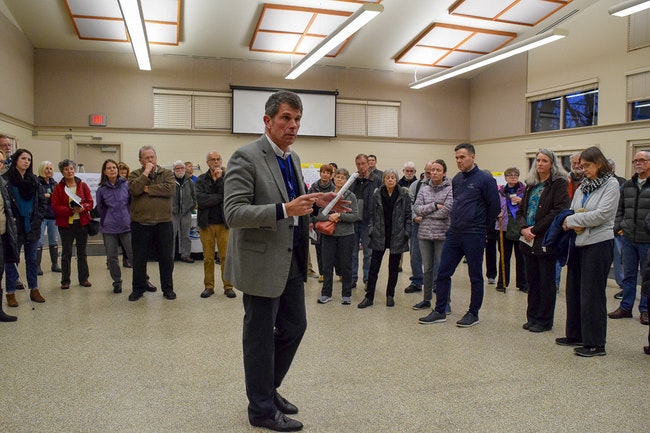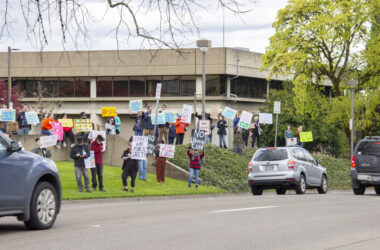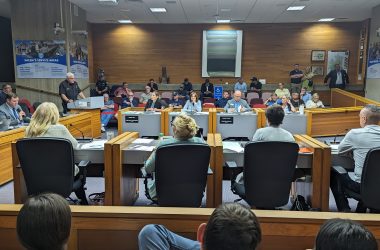 City Manager Steve Powers responds to questions from the a crowd of neighbors at Pringle Community Hall. Plans to turn the hall into an emergency shelter were scrapped Tuesday night. (Saphara Harrell/Salem Reporter)
City Manager Steve Powers responds to questions from the a crowd of neighbors at Pringle Community Hall. Plans to turn the hall into an emergency shelter were scrapped Tuesday night. (Saphara Harrell/Salem Reporter)
Salem City Council officially declared a state of emergency around homelessness Tuesday night but at the same time backed away from a plan to set up an emergency shelter.
By officially deeming it an emergency, the city can now take two actions to help homelessness. A 10-bed women’s shelter can temporarily add nine extra beds, and the city can start developing a pilot program to help people who live in their cars find a place to park and sleep.
But the real actions came after a bureaucratic do-si-do.
Councilors decided against turning Pringle Community Hall at 606 Church St. S.E. into a 37-bed, seven-nights-a-week shelter as proposed. They scrapped the idea after hearing roughly two hours of public testimony.
Instead, councilors directed staff to produce two new reports. City staff will explore temporarily repealing pieces of, or all of, a ban on public camping. Staff will also once again explore possible buildings in the city that could become shelters in the future.
Councilors voted unanimously to approve the new batch of plans. Councilors Cara Kaser and Jackie Leung were not present.
The moves are the latest in a six-week-long saga for the Salem government’s plans to manage homelessness.
In December, councilors made it illegal to set up tents or other structures on public property in a bid to clear out homeless camps near downtown.
The city intended to make up for the lack of public camping by paying two local churches to expand their shelter services. The city allocated $213,000 for that, but the plan, which would have brought on more than 100 shelter beds, fell apart. A miscommunication between the city, nonprofits and one of the churches led the church to pull out.
One church – Church at the Park – opened 14 new beds.
Without the beds, many homeless residents moved to downtown sidewalks, under business’ awnings and overhangs. News media locally and statewide began reporting about the city’s plan falling short.
The city eventually declared two downtown sidewalks dominated by homeless residents a health hazard. They have since moved within a few blocks.
Meanwhile, a search party of city staff and nonprofit leaders hunted to find empty buildings to turn into a shelter. They looked at 10 buildings, but no deal emerged.
This story will be updated.
Have a tip? Contact reporter Troy Brynelson at 503-575-9930, [email protected] or @TroyWB.









